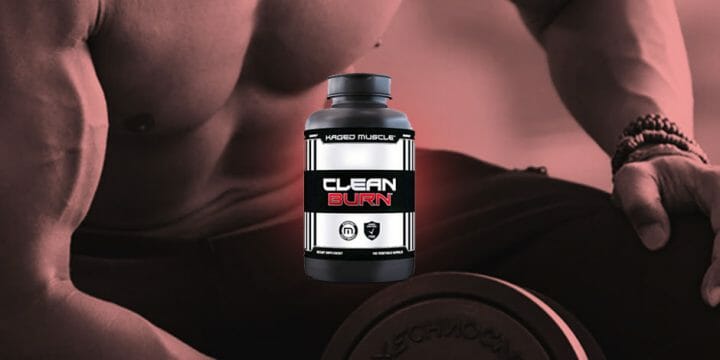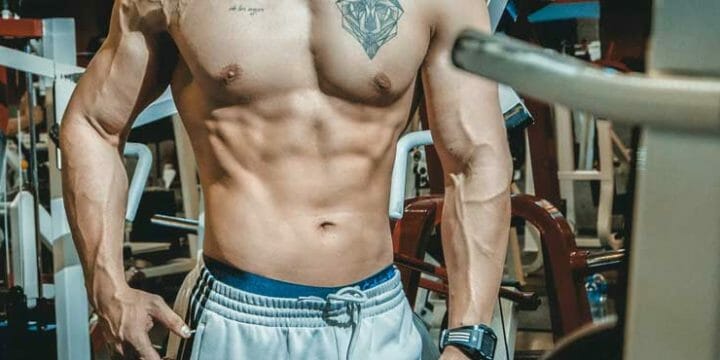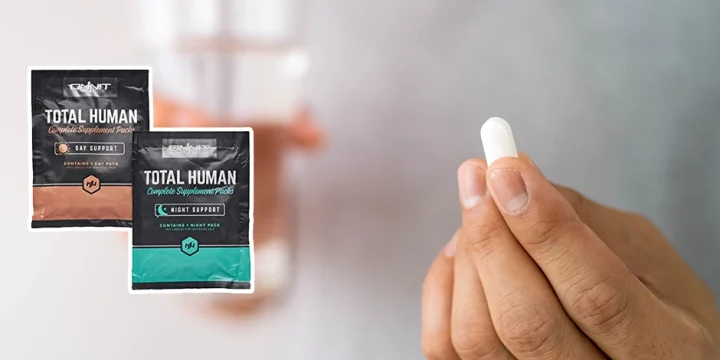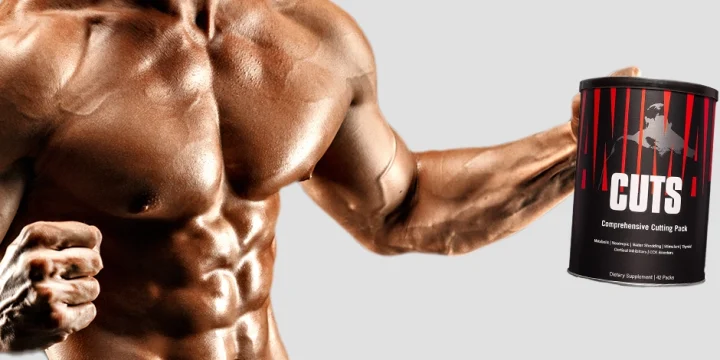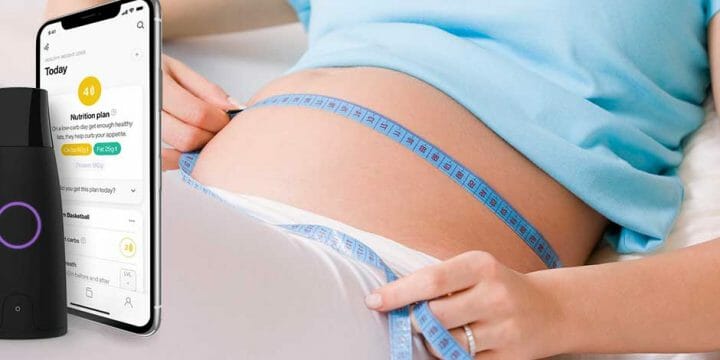Initiating a weight loss program is a highly individualized process. In my capacity as a medical doctor, I have observed the sense of anticipation and motivation in numerous patients eager to undergo a physical transformation.
I often draw upon my own experiences to underscore the necessity of patience in this health-centric journey.
Beyond achieving personal health goals, my professional experience has involved guiding numerous patients through their weight loss journey, focusing on the adoption of healthier choices through exercise, activity, and lifestyle adjustments.
In the following sections, I will outline key observations and stages of weight loss, and provide medically-informed tips to foster successful outcomes.
Quick Summary
- The four important phases of noticing weight loss are the honeymoon phase of rapid weight loss, the reality check of slower fat loss, the plateau phase where weight loss stalls, and the maintenance phase for long-term success.
- During the honeymoon phase, rapid weight loss occurs due to glycogen depletion, which is tied to water weight, making initial progress more noticeable.
- A significant statistic in weight loss is that every gram of glycogen is bound to about three grams of water, explaining the quick weight changes in the early stages.
- Personally, I find that recognizing and embracing each stage of weight loss, especially the challenging plateau phase, can foster resilience and long-term success.
4 Stages of Weight Loss

When starting a journey to lose weight, it is essential to understand the weight loss stages to avoid any frustration or unrealistic expectations.
1. The Honeymoon Phase - Glycogen Depletion
Glycogen is stored sugar in your body, used to fuel activities such as movement and thought. The liver and muscles store glycogen based on how active you are, how much energy you burn at rest, and the types of food you eat.
Glycogen stored in the muscles is primarily used by the muscles, while the liver stores meet the needs of the rest of the body, like the brain and spinal cord [1].
A low-carb diet can impact glycogen stores, and a sudden restriction of carbs may make you feel tired or mentally fuzzy.
Exercise causes the most depletion of excess glycogen stores, but dietary changes, like fewer carbs, can substantially impact levels.
2. Reality Check - Slower Weight Loss

Stage 2, typically reached a few weeks into your program, is where you aim to stay until you reach your goal, focusing on fat loss rather than just weight loss.
Many people use the terms weight loss and fat loss interchangeably, but they have different meanings.
Weight loss is overall body weight loss that may include water and muscle [2]. Losing fat is a healthier goal.
How much weight you lose in this phase depends on your goals, diet, activity level, and motivation.
“All fat loss is weight loss, but not all weight loss is fat loss. Fat loss is a healthier goal, as it prioritizes fat loss rather than muscle or water losses.”
- Gavin Van De Walle, MS, RD.
3. The Plateau - Don’t Get Discouraged

This phase represents a test of perseverance, characterized by a period where the body undergoes adaptation. So why does a weight loss plateau happen?
When losing weight, you will lose fat and some muscle. Muscle keeps your metabolic rate - the rate at which you burn calories - higher.
Losing a bit of muscle as you experience weight loss will cause your metabolism to decline, meaning you will burn fewer calories than you did at your starting weight [3].
Tips for Overcoming the Plateau
There are a few things you can do to try and get beyond this plateau:
- Cut more calories - You may be able to cut your calorie intake a bit more, but remember consuming fewer than 1200 calories per day may do more harm than good, like being hungry most of the time and risk over-eating.
- Exercise more - The minimum suggested amount of exercise is 150 minutes (moderate) or 75 minutes (vigorous) per week. If you have been working out at these minimums, try increasing your workout time, and remember it is best to distribute the time throughout the week.
- Do more activity - Remember that real-life movement burns calories. Movement can be household chores or walking more and using your car less. Any activity aids in calorie burning.
Strength training can also help you burn additional calories while gaining muscle. If you are still stuck, reach out to your healthcare provider, registered dietician, or certified personal trainer, who may have additional advice to overcome weight loss plateaus.
4. Maintaining Weight Loss

At this stage, you've made diet and exercise a part of your lifestyle, which is crucial for maintaining weight loss.
While many focus on diet and exercise as the primary factors in weight loss, it's essential to understand the significant role of the Basal Metabolic Rate (BMR). BMR represents the energy expended by our bodies to maintain basic functions, even at rest, and accounts for a substantial portion of our total caloric expenditure.
Tips to Maximize Weight Loss by Stage

Let's look at ways to maximize weight loss in each stage.
Rapid Weight Loss Stage
You likely will experience rapid weight loss when you first begin as your body adjusts to restricted caloric intake and increased activity. Keep a few things in mind as you progress toward your goal.
- Set realistic goals
Keep the expectations of yourself real and in check. A new fitness and diet plan requires you to adjust mentally and physically. Keeping realistic goals helps you avoid an emotional roller coaster and will help you maintain motivation to keep going.
- Start measuring and tracking your food
People often underestimate portion sizes and calorie intake.
Measuring is essential; healthy eating habits begin with never eating out of the original product packaging unless it is a single portion. A structured meal plan can also help you stay within your calorie goals.
The best way to track calorie deficit is to track it with a food log. Many great apps make this easy.
- Fill up on healthy stuff first
Make sure to get your fill of whole foods, fruits, and veggies first; then, you won’t be hungry for the tempting, empty-calorie foods. Some people opt not to have those in the cupboard to make resisting easier.
- Vitamin D
An often-overlooked factor in metabolism and weight management is vitamin D. Beyond its well-known benefits for bone health, vitamin D plays a role in metabolism and weight change.
Achieving recommended Vitamin D levels can aid in more effective weight loss. If you're looking to optimize every aspect of your weight loss strategy, considering your Vitamin D intake might be a step in the right direction.
- Practice mindful eating
Mindful eating is the practice of slowly and deliberately eating, focusing on the food, your feelings, thoughts, and body sensations [4].
- Don't go crazy at the gym
Exercise aids in burning calories, losing fat, and reducing stress, but overdoing it can lead to quick burnout and stalled efforts.
Slow Weight Loss Stage
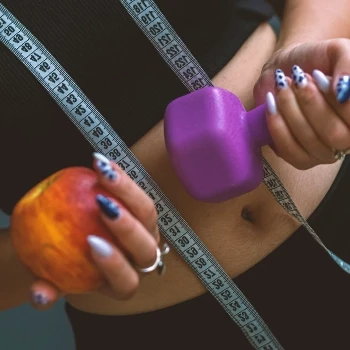
Once you have found your rhythm, established healthy habits, and lost weight, it is time to maintain steady, healthy weight loss to reach your goal. Keep the following in mind during this stage.
- Switch up your workouts
As good as cardio is, strength training is also very effective for losing weight [5]. Adding high-intensity interval training (HIIT) for weight loss can burn calories and significantly increase endurance.
- Focus on fiber and protein
Incorporate fiber and protein in your diet to stay full longer and increase calorie burn during digestion [6].
“Additional protein, whether from shakes or whole foods, may help minimize the amount of weight you regain after weight loss.”
- Alina Petre, MS, RD (NL)
- Avoid alcohol
Alcohol is empty calories that may inhibit burning fat, leading to extra belly fat [7]. Of course, an occasional glass of wine or drink will not destroy your efforts, but frequent drinking risks gaining back the weight you have worked hard to lose.
- Don't obsess with the scale
The scale doesn't always reflect progress, as it doesn't account for muscle gain or water weight. Fluctuations are normal.
Remember, fat-burning occurs during this stage; sometimes, how your clothes fit tells more of the story.
Great options for all-natural fat burners work with you as you exercise and eat healthy to burn fat further. I have seen excellent results in my patients when we have added this final piece of the puzzle.
Check our articles where we rate them and find the best option.
What Are the Best Tests for Weight Loss?
Although there are no specific "tests" for weight loss, there are key assessments and approaches.
Physical Examinations & Mass Indices
- Body Mass Index (BMI): A common index to determine obesity, calculated by dividing weight in kilograms by the square of height in meters. It has limitations as it does not account for muscle mass and visceral fat.
- Waist Circumference Measurements: Important for diagnosing obesity, especially visceral fat around the abdomen, which is linked to heart disease and diabetes.
- Skinfold Measurements: Performed by medical professionals to estimate body fat percentage using bioelectrical impedance analysis.
Ultrasound Examinations
- Used to get a specific look at body composition and accurately estimate body fat percentage.
Laboratory & Blood Tests for Weight Loss
- Lipid Panel: Measures good and bad cholesterol levels and triglycerides.
- Comprehensive Metabolic Panel: Assesses electrolytes, enzymes, and minerals.
- Blood Sugar & HbA1c Tests: Indicate diabetes, often associated with obesity.
- Hormone Testing: Checks levels of hormones like thyroxine, adrenaline, and cortisol, which affect metabolism.
- Liver Function Tests: Important for obese individuals at risk of fatty liver syndrome.
FAQs
How Long Does It Take To See Noticeable Weight Loss?
Noticeable weight loss may take as long as 6-8 weeks for you to notice. Friends who don’t see you daily may notice it in four weeks.
Where Do You First Notice Weight Loss?
Where you first notice weight loss is highly individual, and your gender is a significant factor. For men, the belly tends to be the first place to see initial weight loss. Women tend to lose weight all over, with the hips and thighs holding on to the weight the longest.
References:
- https://www.verywellfit.com/what-is-glycogen-2242008
- https://www.healthline.com/nutrition/weight-loss-stages#stages
- https://www.mayoclinic.org/healthy-lifestyle/weight-loss/in-depth/weight-loss-plateau/art-20044615
- https://www.health.harvard.edu/staying-healthy/8-steps-to-mindful-eating
- https://pubmed.ncbi.nlm.nih.gov/18356845/
- https://www.ncbi.nlm.nih.gov/pmc/articles/PMC4258944/
- https://pubmed.ncbi.nlm.nih.gov/16047538/
About The Author
You May Also Like
